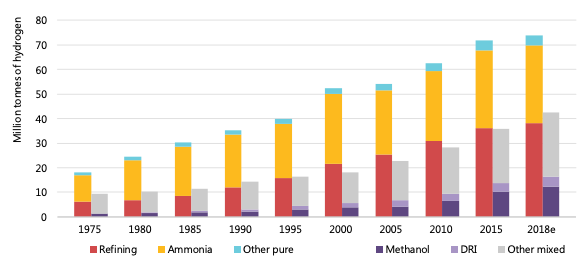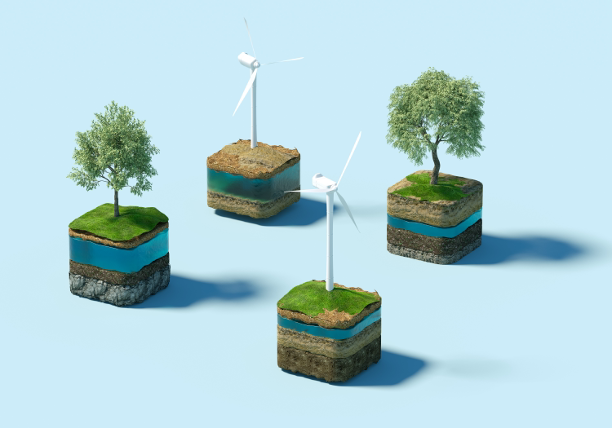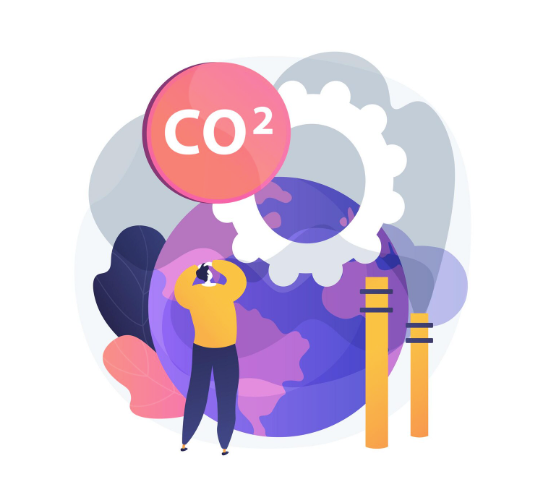
#Energy Compliance #Sustainability #Energy Management #Energy Consultancy
From Jules Vernes to Jérémy Rifkin, there have been many visionaries anticipating the advent of a hydrogen society.
Long considered a mirage, hydrogen is making a strong comeback in the energy debate and the European Union recently published its hydrogen strategy.
Could we be at the start of a major revolution thanks to this gas discovered in 1766 by the chemist Cavendish, then baptised “hydrogen” by Lavoisier?
Hydrogen could help accelerate the energy transition towards renewable sources - provided that it is free from fossil fuels.
Hydrogen yesterday and today: a by-product of fossil fuels
Representing 75% of the gaseous mass of the sun, hydrogen is considered the most abundant element in the universe. On Earth, it is not very present in its pure state: very light, it is in fact not retained by gravity.
However, hydrogen is available all around us combined with other elements. It is found in each molecule of water. Associated with carbon, it is in all plants and animals. Fossil fuels, themselves derived from the decomposition of living matter, are no exception. Hydrogen can be produced by separating it from these other elements.
According to the International Energy Agency (IEA), approximately 70 Mt of pure hydrogen is produced each year. The vast majority of this hydrogen comes from the processing of natural gas (69%) and coal (27%). Water electrolysis and other routes provide the rest.
Since 1975, global hydrogen production has quadrupled. The two main markets were oil refining – where hydrogen is used to desulphurize and purify fuels – and the production of ammonia, itself mainly intended for the manufacture of fertilizers.
Global annual demand for hydrogen since 1975

This rapid development of hydrogen has unfortunately in no way contributed to the decarbonisation of economies. In 2018, global hydrogen production caused the release of 830 Mt of CO2 into the atmosphere according to the IEA, i.e. the equivalent of 2.5 times of France's CO2 emissions.
Differences: “gray” hydrogen, “blue” hydrogen or “green” hydrogen?
"Gray Hydrogen is obtained directly from natural gas or coal. It emits around 9 kg of CO2 from gas and 20 kg of CO2 from coal.
In Europe, almost all hydrogen comes from natural gas.
A first way to limit its carbon footprint consists in recovering part of the CO2 before it dissipates into the atmosphere: which is then “blue hydrogen”, limiting therefore climatic damage.
Under current conditions, gray hydrogen costs about €1.5/kg in Europe, slightly more than in the United States or China where gas and coal are cheap. Furthermore, storage and transport costs are limited by the proximity between production and consumption sites, most of the current installations being located in refineries or petrochemical estates.
Another way to produce hydrogen is through electrolysis ("green" hydrogen), which uses electrical energy to get the hydrogen present in the water.
Electrolysis then makes it possible to store excess electricity by transforming it into hydrogen, which becomes an integrator of renewable sources in the energy system.
How to make green hydrogen competitive
The cost of producing green hydrogen by electrolysis depends on three parameters: the price of the electricity used in the electrolyser, the cost and efficiency of this electrolyser, the transport and storage costs from the production site.
Currently, the cost of a kg of green hydrogen is within a range of the order of 3 to 6 €/kg, i.e. two to four times that of gray hydrogen. But it is luckily in a sharp decline thanks to the fall in the cost of green electricity and that of electrolysis.
All the worldwide hydrogen projects aim to accelerate the movement by increasing the scale of the production of electrolysers and investments in storage and distribution networks.
Aid for the use of green hydrogen in the form of a price supplement is more debatable from an economic point of view.
The production of green hydrogen from renewable biomass is another way that could prove the test of time but it is still in the experimental stage.
Finally, green hydrogen could decarbonise industrial processes in the future where substitutes for fossil fuels are difficult to develop.
The most important would be in the steel production where hydrogen could replace coal and provide zero carbon steel. The first industrial test to produce steel with hydrogen is being developed in northern Sweden, as part of the Hybrit project.
Europe facing the hydrogen revolution
Europe has put several tens of billions on the table to support investment programs.
Germany and France are planning to invest 9 and 7.2 billion respectively of public money by 2030.
They have significant advantages: they have global industrial gas industries (with companies like Linde and Air Liquide), they have major automotive and railway equipment manufacturers, excellent public research laboratories and a myriad of start-ups, many of which have emerged from these laboratories.
Would you like to know more?
Or do you have any questions about one or more of these topics?
Feel free to contact us at hello@bramoenergy.com.





























